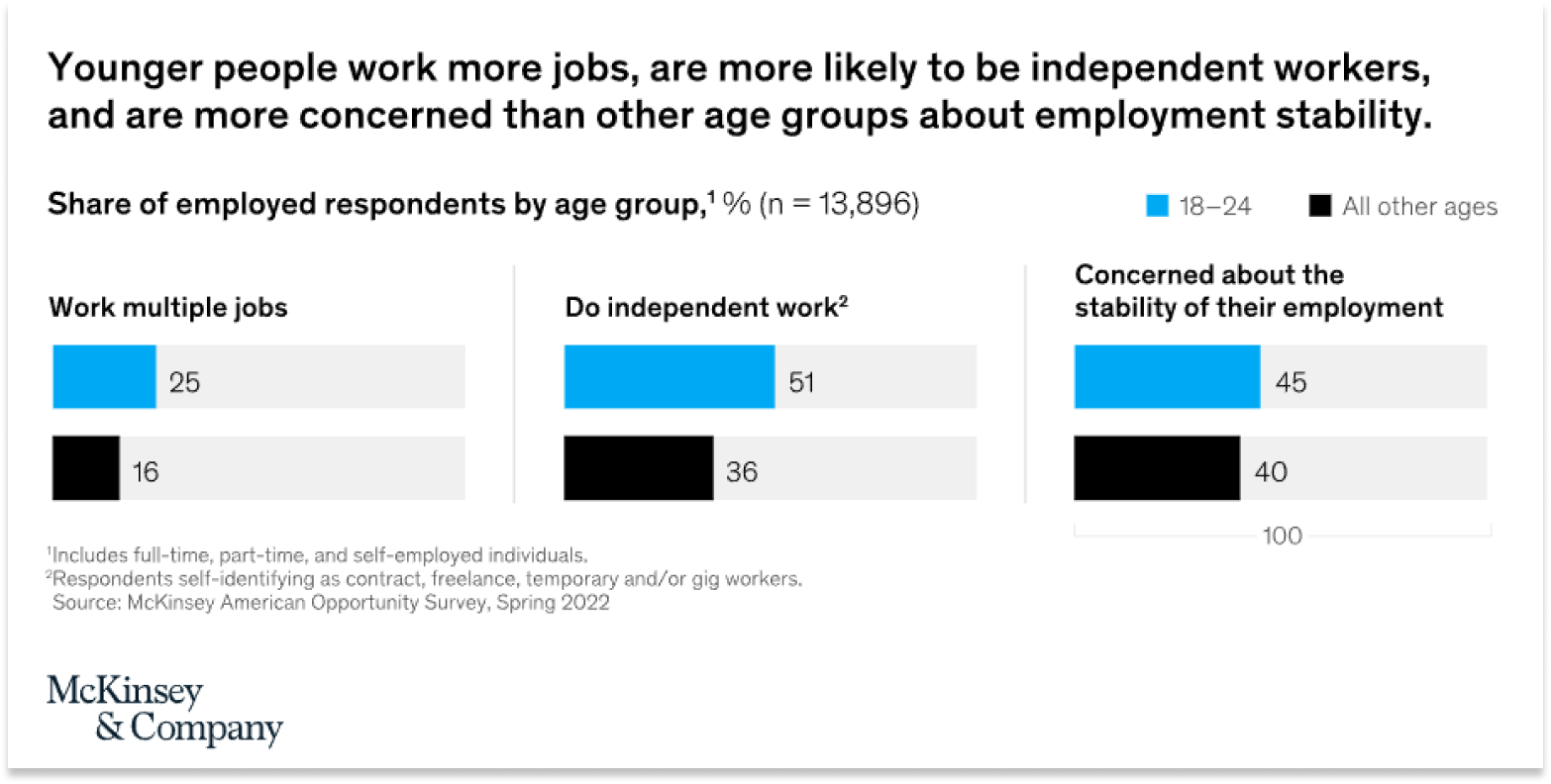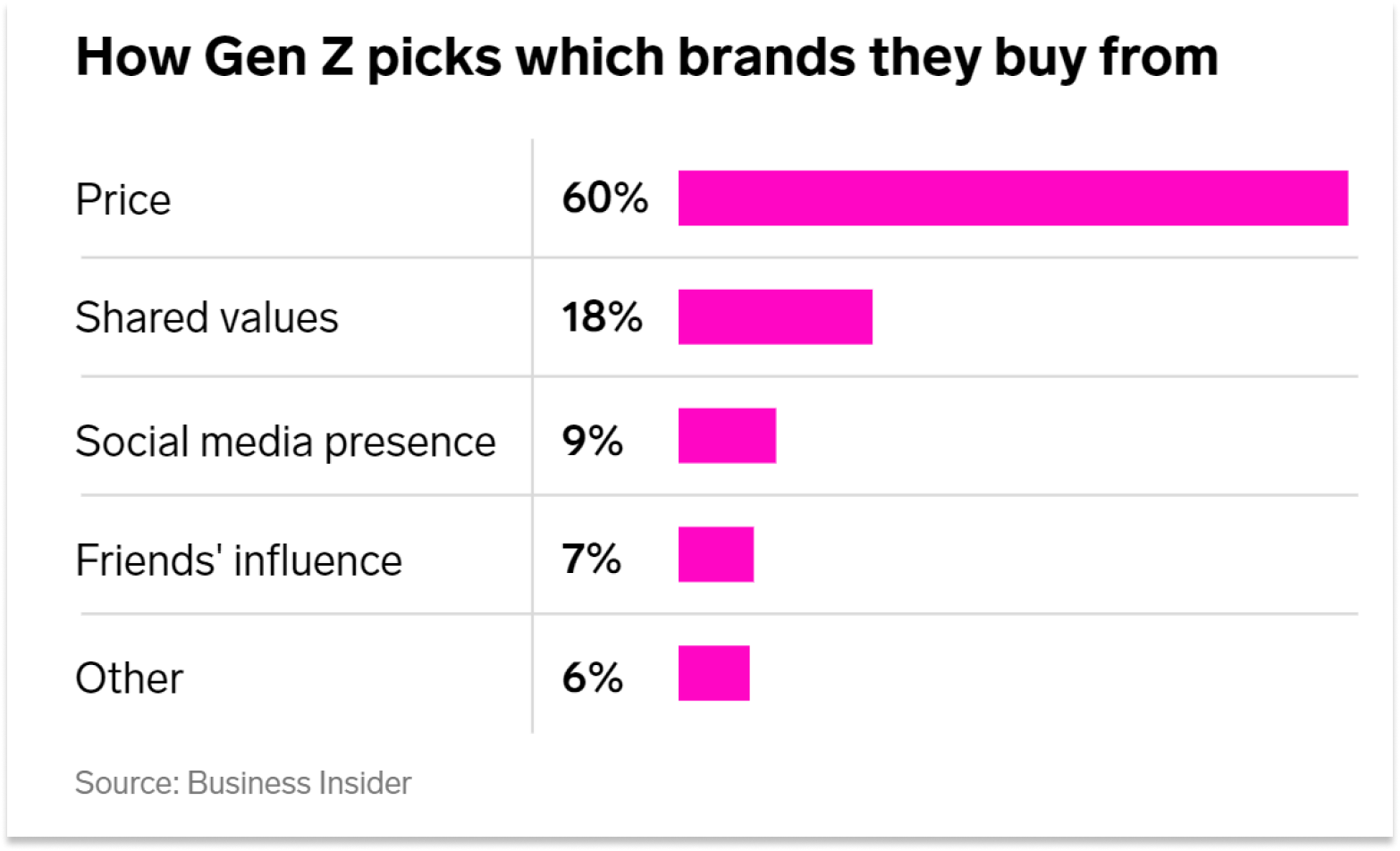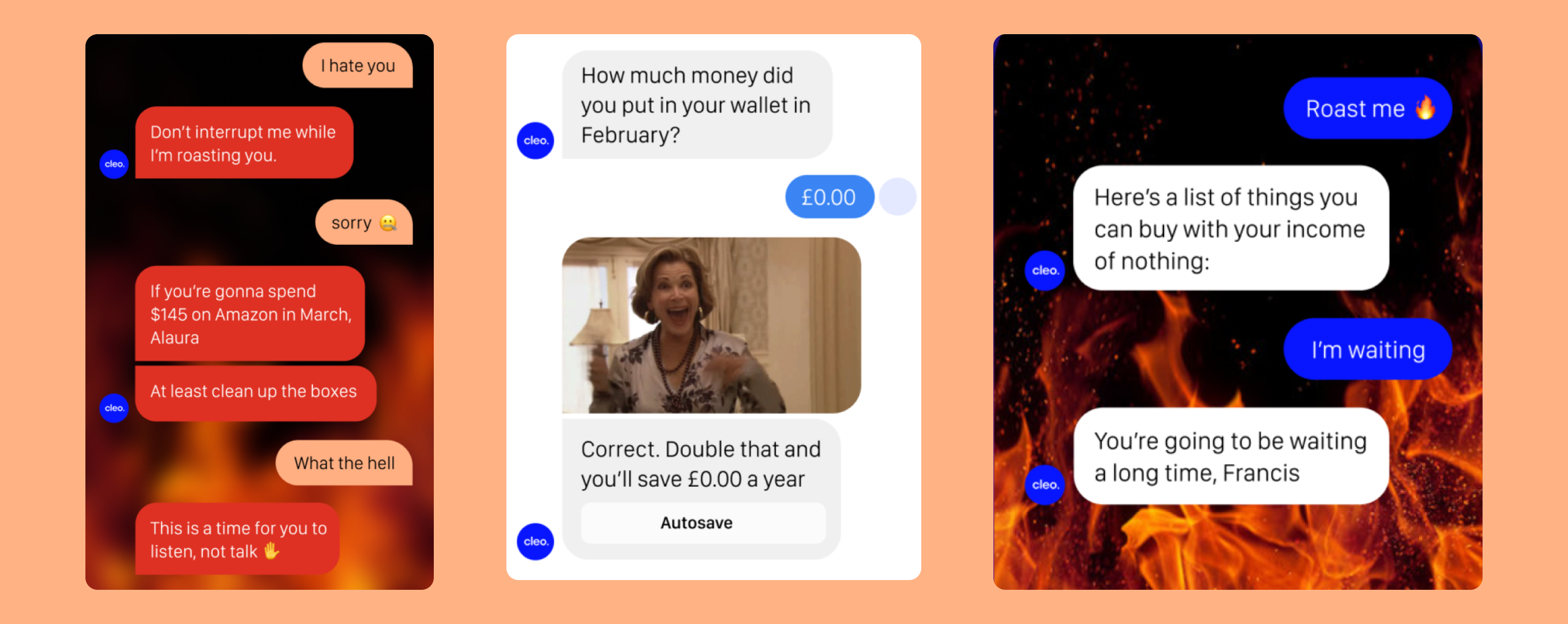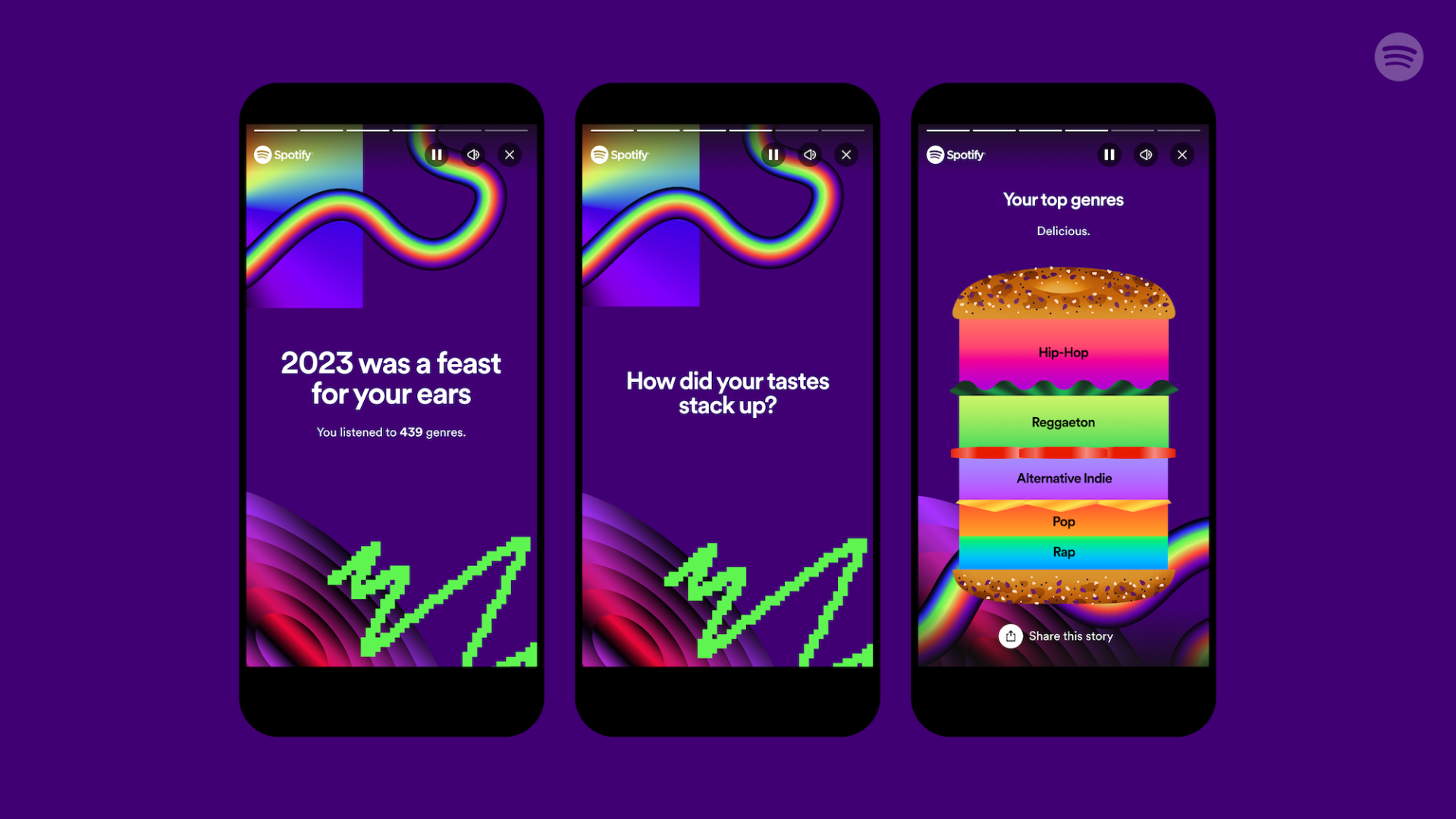Advertising and Marketing to Gen Z Consumers: How To Do It Right
2024-06-24

Knowing your audience is the key to marketing and advertising success. If you’re trying to reach younger demographics, you have to know what sets them apart from previous generations and how to communicate with them in language they can understand and relate to.
Gen Z, born between 1997 and 2012, has now become an integral audience segment for many brands – they’re ready to spend, which means they require advertising and marketing campaigns tailored specifically to them.
They are the first generation to grow up with the internet and social media, so their shopping and brand interactions are different from older generations. In this article, we will look at the basics of advertising and marketing to Gen Z and share some tips on how to do it effectively.
Why Gen Z matters to advertisers and marketers
Gen Z is becoming a big part of the consumer market. Here are some things that make Gen Z very important for advertisers and marketers to focus on:
- Growing market share: Gen Z is gaining more financial independence, which means they have more money to spend. As they enter the workforce and start earning their own income, their purchasing power continues to increase;
- Trendsetters: Gen Z sets trends that other age groups follow. They are often the first to embrace new styles, ideas, and products, and their choices can influence what becomes popular with older and younger people;
- Early adopters: Gen Z loves trying out new products and technologies. They are quick to adopt everything new and rule-breaking, making them key targets for companies launching innovative products.
Taking these characteristics of Gen Z into account can help advertisers and marketers create effective strategies to engage this demographic group. Now, let’s consider other traits that define this generation of consumers.
Understanding Gen Z consumers
Based on various studies and reports, here are the top characteristics of Gen Z consumers that every marketer and advertiser should know:
Preference for savings and price sensitivity
Many Gen Z individuals prefer saving money over spending on expensive brands, which is quite the opposite of the Millenial icons like Carrie Bradshaw from popular culture.
They prioritize spending their money wisely, which makes a lot of sense in the current economic situation. So, price is the most important factor for most Gen Z shoppers that determines their purchasing decisions. That’s something businesses need to take into account if they want to reach this generation of customers.

The economic situation is one of the determining factors of Gen Z's practicality when it comes to shopping. Source: McKinsey
Gen Z is highly practical, so they tend to focus on getting the best value when shopping, either by buying affordable items or investing in durable, pricier products.
However, PR Newswire’s research shows that young consumers are also likely to spend extra money on their favorite things, which can mean that special offers and deals can work really well for this demographic.
GWI’s data points out another aspect of Gen Z’s practicality: this generation prefers to wait for sales instead of buying at full price, and they spend more time looking for discount codes and new products.
They also increasingly look for loyalty and reward programs, even though fewer of them use these programs compared to older generations. Gen Z-ers are using loyalty points more, especially for booking trips and vacations.
This desire to spend money wisely and get the most benefits is definitely something that marketers and advertisers should consider when working on Gen Z-centric campaigns.
Frequent online shopping
Despite the financial limitations, Gen Z frequently shops online, taking advantage of technology that wasn't available to older generations. TikTok and Instagram Shop, Facebook Marketplace, and other platforms like these attract a lot of young customers. If you have an e-commerce business, it’s a good idea to sell your products in these places as well.
However, that doesn’t mean that you can reach Gen Z consumers only if you have an online store: many young shoppers like to visit brick-and-mortar stores, especially those with many brands.
If you’re running a physical store, don’t think that you can attract only older customers – advertising to Gen Z also has some potential.
Lower brand loyalty
Here’s the bad news for some marketers: Gen Z consumers are less loyal to brands compared to previous generations. They are a lot more informed than their predecessors (thanks to the Internet, of course) and prefer to take charge of their lives and futures instead of simply following the crowd.
They’re also okay with buying cheaper, store-brand products instead of opting for more expensive things with famous brand names attached to them.
Basically, Gen Z is less receptive to standard brand marketing tactics that have worked for Gen X and Millenials. It's a lot more challenging for brands to earn loyalty from Gen Z, requiring extra effort and trust-building.
But we can also put a positive spin on this fact: if you’ve got a small brand but your products are of top-notch quality, you can easily find loyal customers among Gen Z even if you don’t have large advertising or marketing budgets to compete with the giants in your niche.
Practical shopping approach
According to Attentive’s data, the key difference between Milennial and Gen Z consumers is that the former have stable jobs and more money to spend, meaning they are more prone to impulse buying, while the latter like to do their research before they buy.
Gen Z-ers feel comfortable spending no more than $20-$50 online and usually wait a few days before deciding to buy something. They prioritize price and practicality over brand names and search for specific items based on need, color, or texture to get the best deal and quality.

Source: Business Insider
Gen Z consumers are also more skeptical and put an emphasis on transparency and authenticity – thanks to the Internet, we can easily fact-check and verify information online, including the claims made by brands.
Personal expression is key
Gen Z doesn’t put as much value on brand names as previous generations: they prefer to use products in unique ways rather than letting brands define their identity.
Young consumers value uniqueness and strive for personal expression in their purchasing choices. As we’ve said before, they also look for practical value and quality, and combined with the ability to express themselves through various items, it helps them decide whether to buy something or not.
Interest in experiences over possessions and status
The unstable economic and political situation in the world, as well as the tendency for escapism, make experiences a priority for Gen Z-ers. Often times, they are more interested in experiencing new things than owning material possessions.
This explains the growing popularity of consumption practices like renting and thrifting, and caring about how things that create our everyday reality make us feel.
Influencer impact
We know that influencers play a significant role in shaping brand perceptions, which was also the case for classical celebrities in the past. Since they spend a good portion of their time on social media platforms, Gen Z customers tend to trust influencers over traditional brand marketing.
But it’s important to note that it usually means micro-influencers, i.e. content creators with a small but loyal following, authentic content, and a close relationship with their audience.
Conscious and value-driven consumption
This generation also values authenticity, transparency, environmental sustainability, and fighting for various social causes. Gen Z-ers are more likely to support brands that align with their values and prioritize companies that are transparent and responsible.
However, Gen Z consumers also sense when brands are dishonest in their claims to be sustainable or socially responsible: there are many cases when large companies face backlash because their actions don’t match their words.
Thus, it’s crucial to make sure that you choose your brand’s values carefully and can back up the claims that you make in marketing campaigns that focus on socially and environmentally-conscious production and business practices.
Social media as a place for discovery
Gen Z grew up surrounded by constant content and information on social media, making inspiration and discovery essential to their identity.
That’s why Gen Z is always open to discovering new brands and finding new products online. They especially like using apps like TikTok and Instagram to discover trends in spheres like fashion, beauty, food, crafts, and self-care.
On the other hand, when they're making bigger purchases or looking for places to go or professional services, they tend to use Google, just like older generations.
It's important to recognize these preferences to run different types of campaigns (e.g. for food and hospitality vs. clothing businesses) in places where they can reach the intended audience.
Now, it’s time to move on to the specific strategies and tips that will help you not just reach your Gen Z customers but also engage and communicate with them in a meaningful way.
Key strategies for advertising and marketing to Gen Z
There are several things you can do if you want to effectively reach Gen Z and build genuine and long-lasting relationships with them:
Build trust, stay engaged, and be responsive
Keep engaging with Gen Z to stay relevant and respond to their changing tastes and needs – that’s how you build trust in the long term and focus on something more stable than ephemerous brand loyalty.
Here’s how you can do it:
- Stay relevant: update your content regularly to match Gen Z's changing interests and trends on different platforms. Keep up with what's popular, but make sure it fits the essence of your brand;
- Maintain an active presence: be active on platforms where Gen Z spends time. Post frequently and join in on trending topics;
- Interact consistently: respond to comments and messages in time to show that your brand is reliable and ready to engage in dialogue with the customers;
- Provide great customer service: offer fast and helpful customer service to build loyalty. Gen Z values quality customer service just as much as older generations, but they can also prefer a different style of communication (e.g. something less formal than what is typical in customer service);
- Get feedback: collect and act on feedback from Gen Z through polls, messages, or surveys. This helps your brand stay aware of what young customers need and look for;
- Adapt: be ready to change your strategies based on feedback and trends. Everything is constantly in motion, and businesses that know how to adapt to changes in customers’ preferences and tastes get the best results.
Be authentic
Gen Z values authenticity and can easily spot fake or misleading ads. That means that brands need to be genuine and honest in their communications. This generation prefers brands that show real people and true stories, not overly polished or staged content.
So, be open about your business practices (supply chain, working conditions, fabrics, etc.). Share details about where your products come from, how they are made, and who makes them. This can help you build deeper trust and loyalty than is possible with regular marketing or advertising.
Here are some other tips that might help:
- Show real stories, behind-the-scenes content, and your true brand values to build trust and credibility;
- Share employee stories, customer testimonials, and the day-to-day operations of your business;
- Highlight eco-friendly practices, e.g. using sustainable materials, reducing waste, and supporting recycling or secondhand markets in your campaigns. Explain how your brand is making a positive impact on the environment and society.
Be transparent about the pricing, durability, and quality of your products
To sell to Gen Z, make sure to understand and cater to their value-conscious mindset, marketing your products as smart financial choices. Try shifting the focus to cheaper products that cost less than $50: that’s the upper limit of what most young consumers are willing to spend online.

Levi's shows how to advertise to Gen Z the right way by speaking directly to their needs (like spending their money wisely) and values (shopping sustainably).
As Gen Z-ers like to get tangible value from things (and not just symbolic), you need to communicate the tangible benefits of your products. Educate them: provide all the necessary information about how your products are made and what they’re made from, how to clean and use them, how they compare with other options on the market, and so on.
To attract those willing to invest in higher-quality items, make it clear what they can get from their purchase in the long term. To drive the point even further, use price comparisons: show how your products are a better deal than what your competitors offer.
Clearly communicate your pricing and the value your products offer, and you’ll build a solid case in favor of purchasing from your business for those young and conscious shoppers. You can also create educational content about your products/industry to empower Gen Z to make informed decisions.
Speak Gen Z’s language
Gen Z likes it when you talk to them like a friend, not like a business. Avoid sounding too formal or using complicated words. It’s okay to use slang and current language that feels natural to them, but make sure it fits naturally and doesn’t feel forced.

The success of Cleo's AI assistant shows that Gen Z users prefer the interactions to be fun and humorous, even when they're getting "roasted".
Here’s how you can talk to Gen Z in the way they can relate to:
- Keep it simple: use straightforward language that’s easy to understand, without fancy words. Basically, try to write your ad copies and text-based content like you’re chatting with someone face-to-face, but make sure you’re not stepping on your audience’s boundaries;
- Use slang wisely: it can be tempting to use slang words when communicating with Gen Z through marketing and advertising campaigns. But it’s important to not overdo it and use slang that’s actually relevant at the moment (which is why you should regularly do research on current trends);
- Understand their feelings: research the challenges and dreams of your audience to know what they can relate to. Then, address their concerns and offer solutions in your content or ads;
- Use fun visuals: use memes, GIFs, short videos, and emojis to add fun to your content and ads. These elements make communication more interesting for Gen Z and can help your brand stand out from the crowd;
- Encourage them to participate: invite your Gen Z customers to share their ideas and join in activities – they love to feel like a part of a community. User-generated content, as well as polls, quizzes, and challenges, can help with that.
Collaborate with micro-influencers
Collaborating with content creators is a great way to connect and communicate with Gen Z audiences, give your brand more credibility, and find new loyal customers.
Here are the key tips in how to do it right:
- Choose influencers who share your brand's values: pick influencers who believe in the same things your brand does. If your brand cares about the environment, work with influencers who care about sustainability too. This way, their followers will trust what they say about your products;
- Work with influencers who have a strong connection with their followers: find influencers who have a real connection with their audience. Look for ones who get lots of likes and comments and seem to really interact with their followers;
- Make sure the endorsements feel real: Gen Z likes things that are genuine. The influencer should honestly like your product and talk about it in a way that feels natural to their followers;
- Tell a story with your product: Instead of just talking about what your product does, show how it fits into everyday life. Let influencers use your product in their daily routines or hobbies. This helps Gen Z see how your product can make their lives better;
- Let influencers show your product naturally: give influencers the freedom to feature your product in a way that makes sense for their content. Whether it's through videos, tutorials, or photos, make sure it feels like a normal part of their life.
Support personal expression
As we’ve mentioned earlier, Gen Z values expressing themselves (both as individuals and as a part of specific communities) in unique ways. By supporting personal expression and allowing flexibility in product usage, your brand can attract and retain Gen Z customers.
Here’s how to do it:
- Promote versatile usage: highlight how your products can be used in various ways. For example, if you sell clothing, show different outfit combinations or styling tips that cater to different tastes and personalities;
- Encourage customization: offer options for customization or personalization. This could be through customizable products where your customers can choose colors, designs, or features that they prefer;
- Facilitate personal branding: Gen Z enjoys showcasing their individuality, so provide tools or platforms where they can personalize their purchases. For example, if you sell phone covers, include the option to get customized versions with different visuals or their names printed on the items;
- Support diverse styles and identities: acknowledge diversity in your marketing and advertising campaigns through showing different lifestyles, cultures, and identities – this way, your brand can attract a wide range of Gen Z consumers.
Leverage user-generated content (UGC)
Encourage your customers to share their experiences with your brand. User-generated content is seen as more authentic and trustworthy. This not only engages your current customers but also attracts potential customers who see genuine testimonials.
For example, you can run contests to let users share their stories or experiences with your products. It’s important to offer rewards (e.g. gifts, special offers, free subscriptions, etc.) or recognition (e.g. reposts on your page) for the best user-generated content – that’s how you can convince people to participate.
Once you get some quality UGC, you can use it as a material for your advertising campaigns to create more credible ads that come across as transparent and authentic.
Optimize for mobile
Hubspot’s Consumer Trends report shows that a majority of Gen Z-ers use their phones to shop online. If that’s the demographic you’re aiming for, you have to make sure that your website, ads, and content are optimized for mobile.
Your website should have a responsive design and be easy to navigate on mobile devices. The colors and visuals also matter since Gen Z is quick to judge brands based on their visual presentation, so research what your audience prefers and try to incorporate those elements in the design of your website.
As for ads and organic content, use formats that load quickly and are easy to interact with on smartphones.
Use interactive and visual content
Gen Z enjoys interactive content such as polls, quizzes, and augmented reality (AR) experiences. These types of content are more engaging and memorable, and they encourage users to participate actively rather than passively consuming information.
Gen Z also prefers visual content over text-heavy messages, and this content better be short: attention spans decrease because of social media use, so keep that in mind when working on your campaigns.

Spotify's campaigns serve as a great example of what works for Gen Z: unique and interactive visuals, personalization, and a bit of humor.
Here are some types of content that suit Gen Z consumers’ preferences the best:
- Video content: create brief and interesting videos to get your message across fast. Use platforms like TikTok and Instagram Reels—they're perfect for this. Your videos should be fun to watch and look good, telling a story or sending a message in just a few seconds;
- High-quality imagery: use really good pictures that grab attention. Gen Z likes things that look nice. Invest in professional photos and designs to make your brand noticeable and keep your visual style the same across different platforms for recognizability. Also, choose images that make people feel something and tell a story;
- Memes and GIFs: use memes and GIFs to connect with Gen Z in a way that is familiar to them. These formats can humanize your brand and make it more relatable, and they’re also very shareable. However, make sure to stay up-to-date with current trends and memes to understand the cultural milieu;
- Polls and quizzes: engage Gen Z consumers with fun and relevant questions in the form of polls or quizzes. People like to learn new information, and this content format allows you to share insights about the preferences or practices of various audience segments with your customers;
- AR experiences: AR is a huge trend, especially in e-commerce, because it makes it so easy to try-on things before purchasing them. You can offer virtual try-ons or immersive brand experiences to help Gen Z make the right decision.
Build a stable presence on social media
To win Gen Z’s hearts, brands need to maintain a presence on the social media platforms they spend time on. Multiple studies (like the one by Archrival) show that Gen Z consumers are more likely to remember a brand with an engaging social media presence, and nearly half of them prefer funny or entertaining content.
It doesn’t mean that informative content should be out of the window: you can create content that entertains and provides information at the same time for better results. In short, it’s all about adding value and making interactions with brands fun for Gen Z.
Also, building a solid presence on social media helps businesses engage Gen Z customers continuously post-purchase, tying different touchpoints together. And it's not just about the product, but making Gen Z feel part of a community – regular, timely, and genuine interactions are crucial.
If you’re wondering about which platform to focus on to achieve your business goals, check out our articles about why you might want to consider advertising and marketing on Instagram, Facebook, Snapchat, or TikTok.
Recap
Advertising and marketing products or services to Gen Z requires understanding what they like, how they behave online, and how they prefer to spend their money. They are very different in certain aspects from previous generations, so you have to take these unique characteristics into account when working on your campaigns.
It's important to be authentic, transparent, active on social media, and good at creating fun and engaging ads and content. Keeping up with trends helps a lot too, even if it seems difficult at times.
In short, creating campaigns for Gen Z consumers can be tough but also rewarding. If you adjust your approach to fit their needs and interests, you can build strong relationships and keep them loyal to your brand.
So, find the right place for your business in the online world, be genuine, and stay flexible to grab the attention of Gen Z customers successfully.

